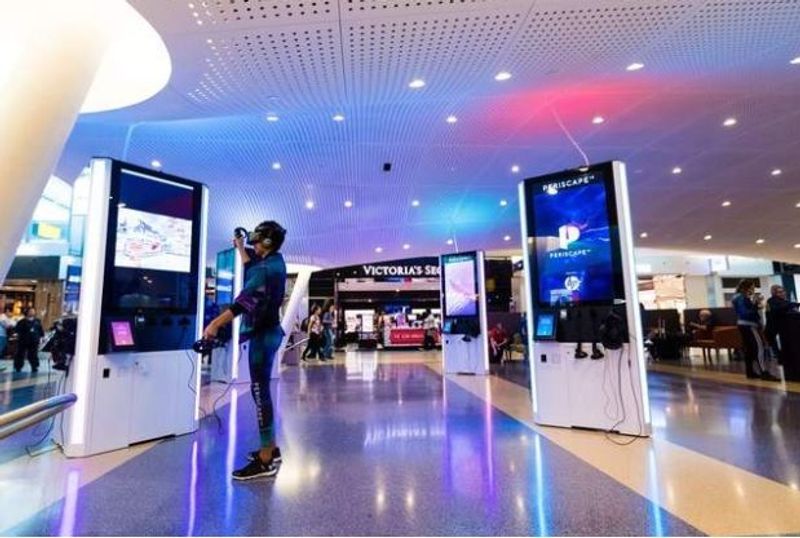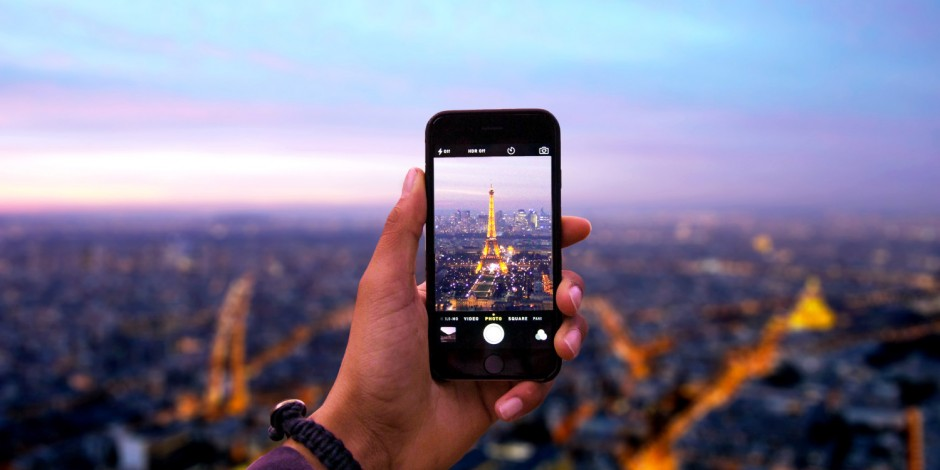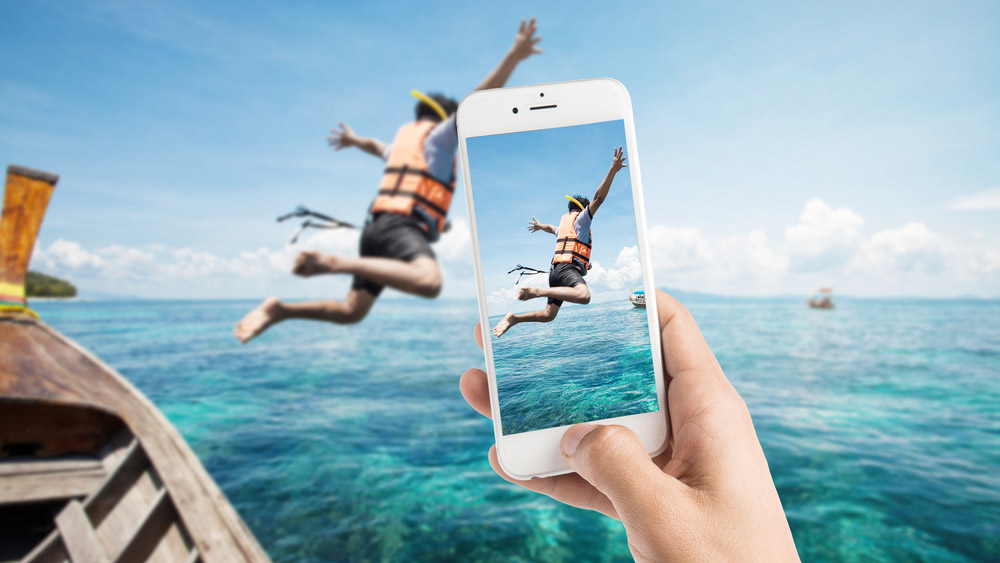Virtual Reality In Airports (Part 1)
Angela Hassassian
Mar 26, 2019 - 6 min read

It’s official. Virtual and Augmented Reality is hitting the world of airports and this might just become part of our regular travel experience of the near future! We at 360 Stories think that this can be a positive game-changer for the travel industry in terms of not only marketing but also customer interaction. In the past, we touched upon how VR is already being used in the travel industry with examples from different airlines, hotels, and booking agencies. In fact, one of our earliest posts talked about how traveling will be affected by the use of not only VR but AR technology as well! It turns out that certain airports and airlines have jumped on the bandwagon and are now incorporating AR and VR into their lounges.
We already know that VR can be used to help customers get an immersive glimpse into their travel destinations and hotels, and in some cases even understand the look and feel of the inside of an airplane, before actually embarking on their trip, all from the comfort of their own home. VR and AR are also being used in different touristic spots. Imagine visiting a site that is crumbling for instance. With the help of this technology, visitors can easily visualize what that site looked like in the time of its former glory. Hotels are using this technology as a way to connect with guests and give them an opportunity to see what visit-worthy locations surround them. And the examples of the uses of Virtual and Augmented Reality in this industry really are starting to become endless. Now, it seems, are the airports’ turns.
VR for Entertainment
By far, the widest use of VR technology in airports (or airplanes) is entertainment. Airports are not exactly known for being fun, at best they can be boring, at worst, stressful. There are only so many things you can do when waiting around in an airport. Drinking cocktails or eating burgers is all well and good, but with travelers constantly looking for an experience, airports are trying to come up with newer ways to appease the masses. That’s why you’ve probably seen gaming stations crop up in different airports, and now, VR installations.
It should come as no surprise that Virtual Reality is a great way to pass the time, and it has been attracting tons of people hoping to try something fun and new to make that waiting time all the more pleasant. While we probably won’t be saying goodbye to sitting in waiting rooms, scrolling through social media or flipping through a book, we may very well be adding a VR adventure to our list of things to do at the airport. Being plugged into an interactive experience is something none of us are likely to forget.
The biggest example of this, and probably the frontrunning pioneer to have embraced VR innovation is JFK airport. JFK sees about 70,000 travelers who pass through Terminal 4 every day. That’s why they had decided to offer travelers an immersive VR experience right in the middle of their airport for a trial period of 6 months, last year. It was fairly affordable for travelers at only $1-2 per minute for 5-10 minute segments, ranging from diving into the ocean complete with whale encounters, to exploring deep space and worlds not yet discovered. You could even opt to play a video game such as Fruit Ninja in VR mode.
The results of that trial? Well, the first week of the soft launch at JFK saw 2,000 people pay for the chance to give it a whirl. Do the math and that comes up to a weeks revenue of $30,000. Do even more math and it comes up to about $2 million annually!
Airlines who embrace VR
It seems that the airlines have really taken a liking to VR as a number of them have been eager to incorporate the new technology in their services over the years. Many of them offer amazing in-flight experiences, helping stressed flyers to break away from their surroundings and enjoy immersive relaxation instead. Others are including them in their various lounges in airports! So where can you get your hands on some Virtual Reality?
Qantas Airways Lounges
At the beginning of 2015, Qantas Airways partnered up with Samsung in order to bring VR technology to its first class cabins and lounges! They offered travelers a VR experience including landing on Hamilton Island, climbing the Sydney Harbor Bridge and diving the Great Barrier Reef.
Lufthansa Airlines
Soon to follow suit was Lufthansa, who in early 2017 gave passengers the opportunity to try out VR in their business lounge. Their goal was to provide travelers with a chance to immerse into a more relaxed atmosphere. In the summer of 2018, they debuted prototype in-flight VR headsets which allow travelers to enjoy the moving landscape below, as well as go on virtual excursions!
Air France
Air France was quick to join in, and since August 2017, they have been testing an immersive entertainment system with VR headsets, letting customers entertain themselves with both 2D and 3D films or TV series in what is considered to be their own isolated and private movie theater.
Emirates Airlines
Emirates Airlines also is working hard to establish itself among its competitors. In March 2018, it introduced VR headsets in its Dubai airport business class lounges, giving travelers a chance to enjoy immersive cinema. The content provided included 2D and 3D movies, documentaries and 360-degree videos in HD. The headset also has built-in sound and video allowing customers to really get lost in the VR world.
Etihad Airways
In April 2018, Etihad Airways announced that VR entertainment technology would be made available in their First Class Lounge and Space and Business Class Premium Lounge, at Abu Dhabi International Airport. They too are searching for innovative ways to enhance their services and hospitality, offering modern travelers what they enjoy.
Alaska Airlines
In September of 2018, Alaska Airlines announced trials for VR entertainment for their first class guests, allowing them to choose from different 2D and 3D blockbuster hits. This includes popular movie such as Ready Player One, Three Billboards Outside Ebbing, Missouri, and the family-friendly hit, Ferdinand.
As we can see, these airlines and airports are trying to transform the process of embarking on a journey with the use of Virtual Reality technology. While these are mostly trials, it certainly opens our eyes to the future that we are heading towards. Virtual experiences and immersive storytelling will soon be commonplace and expected during almost all phases of traveling, from planning your trip while at home, booking, at airports, in airplanes and in hotels.


